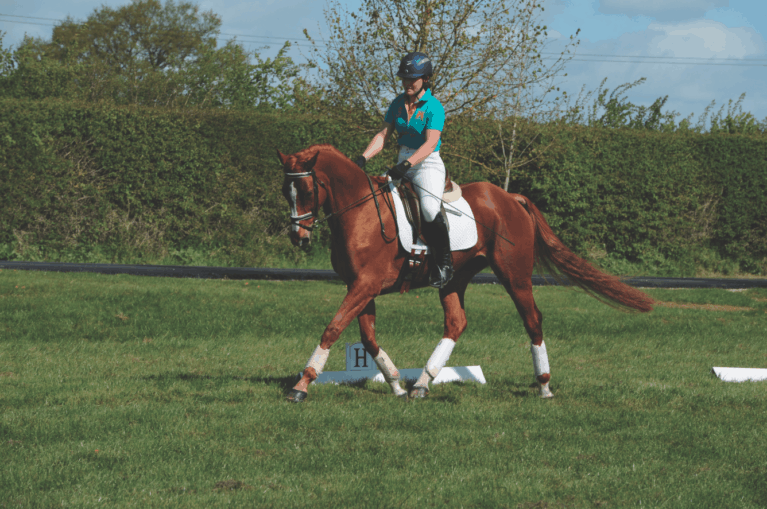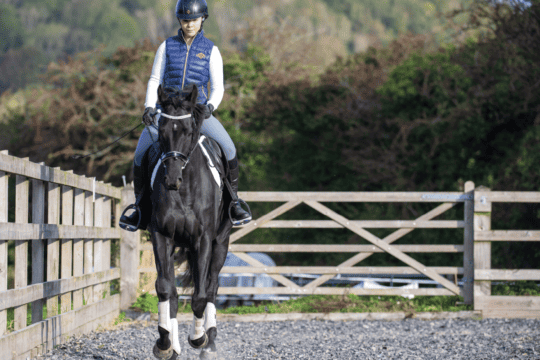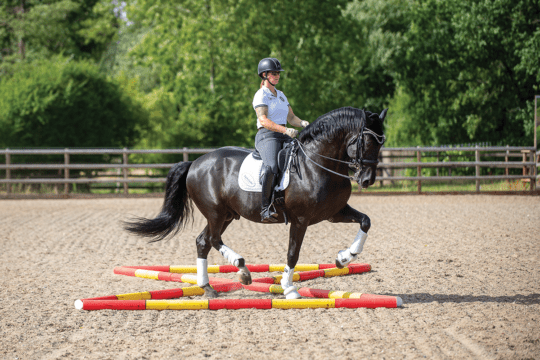Especially in the winter, many riders are guilty of schooling solely on a surface, but if your horse doesn’t get to continue practising over less consistent footing, then he’ll struggle to transition back to grass dressage and showjumping rings when the eventing season begin

Have you ever been skiing or ice-skating? Perhaps it’s something you enjoyed as a child and perhaps you were even quite proficient at it. Now, if you’ve not skied for a long time and you were to get back on the slopes, you would find that you’d lost all co-ordination and wobble around on unsteady land legs. You wouldn’t be able to perform well because your attention would be focused on staying upright. You’d be cautious rather than expressive. This is the feeling your horse has when he’s only ever asked to work on grass at a competition.
Especially in the winter, many riders are guilty of schooling solely on a surface, but if your horse doesn’t get to continue practising over less consistent footing, then he’ll struggle to transition back to grass dressage and showjumping rings when the eventing season begins. You’ll lose marks because he’ll have to compromise on expression and correctness in order to feel secure and balanced.
Perks of the job
Pure dressage horses enjoy real consistency in their work. They train on a surface and they compete on a surface, and the factors that change from one to the next are negligible. Event horses, on the other hand, need to be able to adjust to working across a number of conditions. They may be on a surface or they may be on grass, the footing may be firm, deep or cut up, and they need to be able to school, gallop and jump regardless of the conditions. That dexterity has to become a constant part of your training at home.
Making a change
Being able to work on any surface isn’t just essential for competitive success, it’s also a great way for your horse to find his fifth leg and be able to make educated decisions across the country. Furthermore, it develops his muscles, increases his fitness and also helps his body to safeguard against sprains and pulls.
Training your horse to be able to cope with a multitude of surfaces is as simple as adding some variety to your schooling locations. Traditionally, hunting was the way that riders kept their event horses fit and sure-footed, but if this isn’t an option, then I recommend taking your schooling out of the arena. Adding lateral work to hacks, being able to half-halt on a slope and working on transitions within the gaits while out of your comfort zone will prepare you both for competition.
To find out Richard’s essential exercises for working on grass, including adjustability on unlevel surfaces, rebalancing, and straightness! Get your copy here of the Spring issue of Horse&Rider, on sale 9 March















